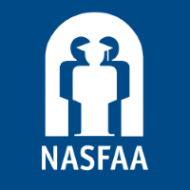Schools Look to Give Students Clean Slate by Using HEERF Money to Clear Unpaid Account Balances

NASFAA
Owen Daugherty, NASFAA Staff Reporter
August 18, 2021
An increasing number of institutions of higher education are using the funds allocated in the latest federal coronavirus relief package to provide their students with debt relief as President Joe Biden further debates whether to issue widespread student debt cancellation.
While these institutional debts may pale in comparison to the federal or private student loans borrowers hold, even small debts owed to schools can hold students back from continuing college and completing their degree.
Across the country schools — from community colleges to Historically Black Colleges and Universities (HBCUs) — are using the funds allocated to them to wipe away millions in outstanding balances from thousands of students’ accounts.
The recent trend began after the Department of Education (ED) in May announced that colleges could use funds they received from the American Rescue Plan to cover institutional debt or funds students owe to their schools. The American Rescue Plan, the third major installment of federal coronavirus relief, was the first that explicitly allowed institutions to use funds to relieve student debt, which partially explains the influx of debt relief efforts this summer.
“This is a way that individual institutions can try to do something for students when it comes to affordability that is completely within their control,” said Dominique Baker, assistant professor of education policy at Southern Methodist University.
The money comes from the institutional portion of funds allocated by Congress that can be used to cover expenses experienced during the pandemic. In some instances schools have also used charitable donations to clear institutional debt.
Forgiving outstanding balances is just one of a myriad of ways in which schools utilized the infusion of money made available by Congress as institutions grappled with droves of students leaving school or opting not to re-enroll as unemployment skyrocketed and the economy lagged.
Ithaka S+R estimated in a report last year that former and current students owe a combined $15 billion total in debt to their schools. Further, the report found that more than 6.5 million students were unable to access their transcripts due to unpaid balances, a common tactic schools use to persuade students to pay off their balances.
The Student Borrower Protection Agency in a report published earlier this year called on Congress and the Biden administration to require institutions of higher education to forgive all institutional debt as a condition of getting additional federal coronavirus relief funds.
Continue Reading
Share








